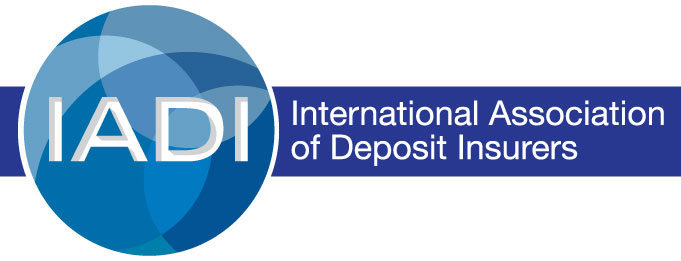Dominican Republic, 17 April 2024
Eva Hüpkes
It is a privilege to be part of this joint event of the Association of Bank Supervisors of the Americas (ASBA) and the International Association of Deposit Insurers (IADI). This gathering provides a unique opportunity for deposit insurers and supervisors to engage in dialogue. In my remarks, I would like to discuss the importance of that dialogue between deposit insurers and supervisors, and why it is a priority for IADI to strengthen this cooperation and the further integration of deposit insurers into the financial safety net of jurisdictions.
The complementary roles of deposit insurance and prudential supervision
Supervisors and deposit insurers share the common objective of safeguarding the stability of banking systems. Their roles are distinct, but complementary. Deposit insurance seeks to insulate depositors from the consequences of unsafe and unsound banking practices and to protect them from the threat of loss in the event of idiosyncratic bank failures. However, the mere existence of deposit insurance, or the belief that the authorities would not impose losses on depositors, can lead banks to take greater risks than they would otherwise.
To mitigate this moral hazard risk, strong supervision is crucial. Supervision should be pre-emptive so that an institution’s weaknesses are identified and addressed promptly, and failure can be averted. Prevention is always cheaper than cure, but it is never enough. Failures do occur. Supervision must therefore be complemented by an effective crisis management and resolution regime that minimises losses and maintains the continuity of critical economic functions. Deposit insurance should provide confidence that the large majority of depositors are protected from losses in the event of failure.
What are the lessons of last year’s turbulence for the role of deposit insurance and supervision?
Against the backdrop of last year’s banking turbulence, national and international bodies sought to identify potential lessons learnt for prudential regulation and supervision, crisis management and resolution, the lender of last resort and deposit insurance functions. Supervisors emphasised the importance of bank’s own risk management, risk culture and governance, the need for supervisors to conduct more frequent and more rigorous stress tests, and the need for supervisors to be willing and able to intervene at an early stage when recovery measures can still be implemented. Regulators identified the need to review the assumptions underlying liquidity rules in the light of changing depositor behaviour and the accelerating speed of withdrawals made possible by digital innovation.
Resolution authorities identified gaps to be filled in the operationalisation of their respective resolution regimes, notably in the bail-in process, and stressed the need for effective public liquidity backstop arrangements. They also highlighted the need for greater optionality and flexibility in the use of resolution tools, including bridge bank and transfer tools. Central banks acknowledged the need for more efficient tools for the provision of central bank liquidity, given the accelerating speed of runs.
Despite these gaps, national and international authorities considered the framework put in place in the aftermath of the global financial crisis to be adequate and effective overall. They also suggested that this framework could be applied to a broader set of institutions.
What about deposit insurance? The banking turmoil has highlighted the important complementary role of deposit insurance, but also its limitations. A proximate cause of failure in all cases, including the US regional banks and Credit Suisse, was depositor flight. This raises the question of whether better deposit insurance could help to avert crises. According to IADI’s global database, about 90 per cent of depositors and deposit accounts in IADI member jurisdictions are covered by deposit insurance, but there has been a gradual, albeit moderate, erosion in the value of covered deposits to currently 47 per cent as banks have increased their wholesale deposit funding. At SVB, over 90 per cent of the value of SVB’s deposits were uninsured. Covering these depositors would require a major change in the deposit insurance system with higher costs and potentially negative side-effects.
Lessons for deposit insurance
IADI undertook a comprehensive analysis of the lessons for deposit insurance systems. These will now guide IADI in its review of the international deposit insurance standard, the Core Principles for Effective Deposit Insurance Systems.
One of the issues under review is the level and scope of coverage. During and after the global financial crisis, many governments in advanced economies increased the coverage of their deposit insurance systems to prevent panic runs. Is there a need for further increases in the level and scope of coverage? Should deposit insurers be encouraged to consider differentiated coverage (e.g. distinguishing between operational or transaction deposits and investment deposits, providing full coverage for temporary high balances or the flexibility to temporarily increase coverage)? Should deposit insurers be encouraged to apply differential premium systems linked to probability of default and loss given default, and would this be a way of taking into account the proportion of uninsured deposits at individual banks?
If so, how effective are differential premium systems in creating the right incentives to reduce risk? How quickly should depositors be reimbursed or (re)gain access to their insured funds? What level of funding makes deposit insurance credible? How should we deal with the risk that the payout to a single bank will deplete the deposit insurance fund? How quickly should a depleted fund be replenished? These are some of the questions that need to be addressed. And any change in the design of one component of the financial safety net affects another. For example, the more depositor protection is extended, the more this requires further changes in the way banks are regulated and supervised to minimise moral hazard risks. It is therefore crucial to consider the architecture of the financial safety net in a holistic way.
The design of deposit insurance systems varies widely across jurisdictions. IADI’s latest report on trends in deposit insurance shows an increase in the number of deposit insurers involved in resolution. This recent growth is largely due to the increasing importance of deposit insurers in funding resolution. In many jurisdictions, resolution functions continue to be housed in separate resolution authorities and there are also separate resolution funds.
Effective integration with the other components of the financial safety net
The recognition of the important but limited role of deposit insurance points to the need for a comprehensive system of supervision and resolution that allows for enhanced coordination and effective integration with the other components of the financial safety net.
For example, effective coordination and information sharing between deposit insurers and supervisors supports the assessment of bank risk and the likelihood of runs, the pricing of deposit insurance, and the preparation of rapid payouts and deposit transfers.
In addition, effective coordination is essential to determine the most appropriate resolution strategy, which may or may not involve the intervention of deposit insurers. Deposit insurers need to have a say in deciding when deposit insurance funds should be used in resolution. The optimal resolution of a bank, whether it involves liquidation and payout to depositors, transfer of deposits to another bank or recourse to alternative resolution funds, cannot always be determined ex ante based solely on the size of the bank and the substitutability of critical functions. Authorities cannot anticipate every eventuality, as each crisis is unique.
Future-proofing the system
A critical issue is how to future-proof deposit insurance systems in the face of technological innovation and the changing financial system. Digitalisation brings many improvements and benefits to the financial sector and its customers, but it also has the potential to fundamentally disrupt structures and value chains that we all take for granted. Deposit insurers, supervisors and regulators need to be prepared to understand the implications for banking, bank funding, depositors, and financial stability more generally. While the future impact of artificial intelligence (AI) and technological innovation in banking is uncertain, research suggests that it is possible to imagine that the frequency of bank runs may increase significantly.
I has the potential to accelerate bank withdrawals and transfers. Currently, AI-driven tools have the ability to analyse large datasets, including banking terms, news, and customer preferences, as well as messages from diverse sources, including social media. Imagine a future where customers can use AI-powered tools to reallocate their deposits automatically and instantly across multiple banks based on factors such as interest rates, stability and personal preferences.
Could AI one day erode the comparative information advantage that banks enjoy today and combined with programmable tokenised deposits, lead to frequent reallocation of liquidity? Could deposit flight become a risk that cannot be mitigated? Or could the entry of new alternative players pave the way for disintermediation of banks? What regulatory challenges would this pose and what are the implications for deposit insurance systems? Are central bank digital currencies (CBDCs) part of the solution? A CBDC would allow households and firms to convert their deposits with commercial banks into deposits in a CBDC account, which in most cases would be considered very safe. Depending on how they are designed, CBDCs could change the dynamics of bank runs, from runs between commercial banks to runs from commercial banks onto the central bank’s balance sheet.
If there are no restrictions on the account at the central bank, customers of a commercial bank perceived as risky might opt to shift all their money to the central bank. The concern is that this option may in itself increase the risk of or exacerbate bank runs. Notably for this reason, some central banks considering the introduction of CBDCs are considering restrictions on how much money a household or firm can deposit in a CBDC account, while others are limiting issuance to wholesale CBDCs.
We cannot predict the future, but must be prepared and our policies need to be future-proof. Although new technology can increase risk, it can also be used to reduce risk, for example by improving liquidity management and monitoring withdrawal patterns. Given the unpredictable nature of technological breakthroughs and their uptake by financial markets, it is important to monitor developments closely and consider how best to adapt our systems. What worked effectively yesterday may not be sufficient tomorrow.
The objectives for the review of the IADI Core Principles are ambitious. The IADI Executive Council has established a High-level Steering Group to lead the review, with a view to conducting a broad stakeholder consultation later this year and in early 2025. We look forward to working with each and every one of you on this important task.
I look forward to hearing your perspectives in the upcoming panel discussion on applying the lessons of last year’s banking turmoil, as well as the recent experience in the Americas.
I would not like to end without expressing my gratitude to ASBA, the speakers and the participants in this important event.
The speaker would like to thank Bert Van Roosebeke for helpful comments on these remarks

